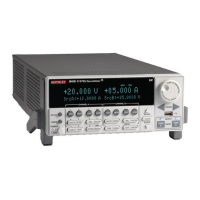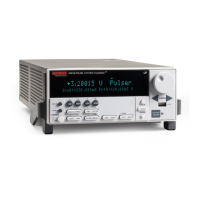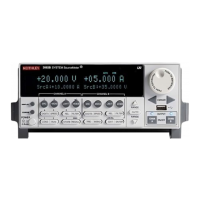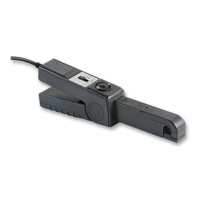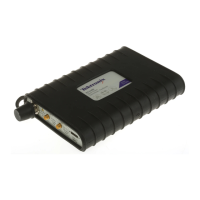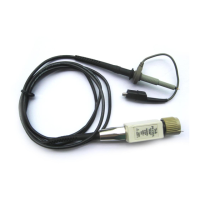High Voltage SourceMeter Instrument Reference Manual Section 5: Source-
2470-901-01 Rev. A / May 2019 5-23
Offset-compensated ohm calculations
The presence of thermoelectric EMFs (V
EMF
) can adversely affect low-resistance measurement
accuracy. To overcome these offset voltages, you can use offset-compensated ohms if you are
making 4-wire resistance measurements on ranges up to 100 kΩ.
Instrument operations, including offset-compensated ohms, are performed on the input signal in a
sequential manner.
For a normal resistance measurement, the 2470 sources a current (I) and measures the voltage (V).
The resistance (R) is then calculated as (R=V/I) and the reading is displayed.
For offset-compensated ohms, two measurements are performed: one normal resistance
measurement, and one using the lowest current source setting.
The offset-compensated ohms reading is then calculated as follows:
• V
1
is the voltage measurement with the current source at its normal level.
• V
2
is the voltage measurement using the lowest current source setting.
• I
1
is the current measurement with the source set to a specific level.
• I
2
is the current measurement with the source set to zero.
• This 2-point measurement process and reading calculation eliminates the resistance contributed
by
the presence of V
EMF
.
When the source is turned on, the output cycles between the programmed value and zero (0 A or 0 V)
to derive the offset-compensated ohms measurement.
Power calculations
Power readings are calculated from the measured current and voltage as follows:
W
here:
• P is the calculated power
• V is the measured voltage
• I is the measured current

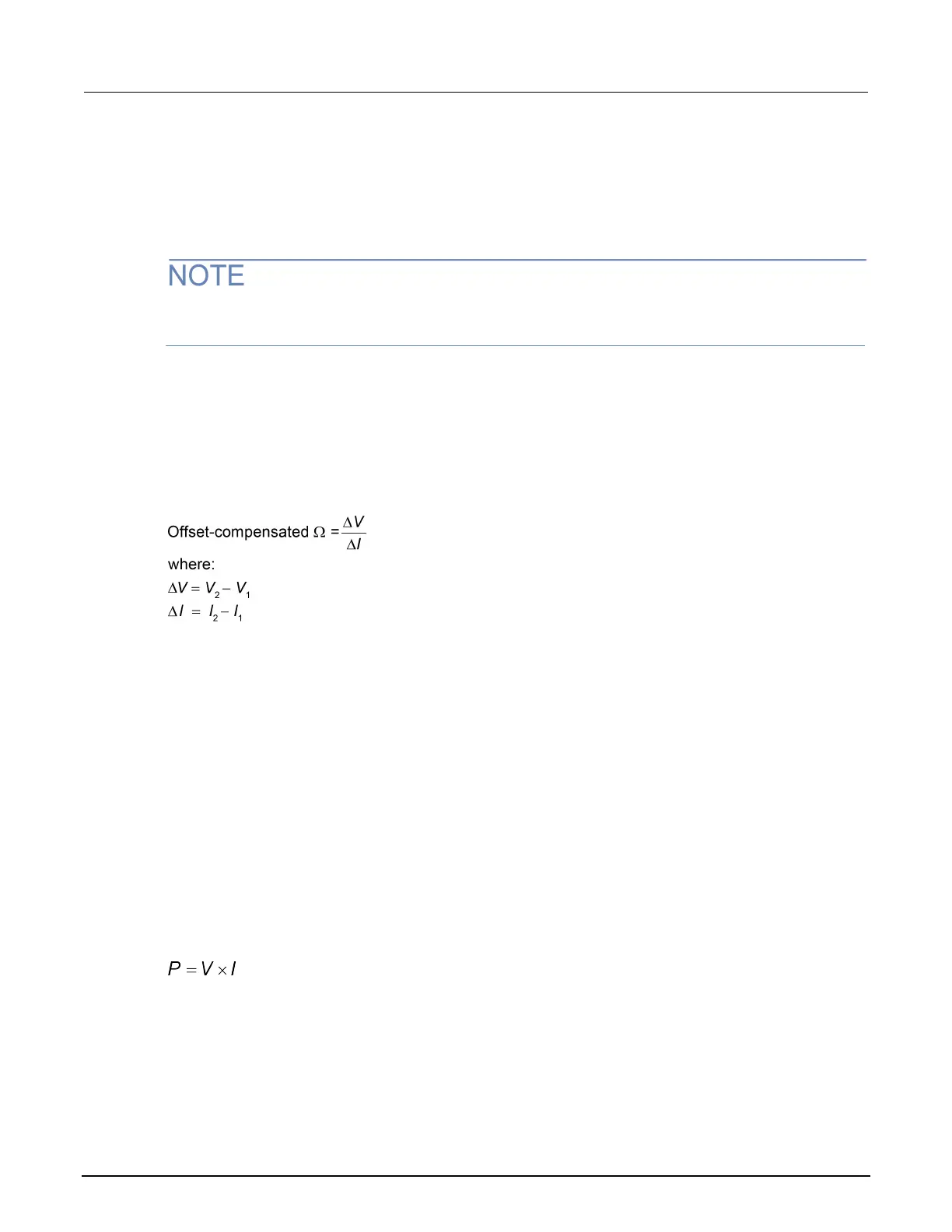